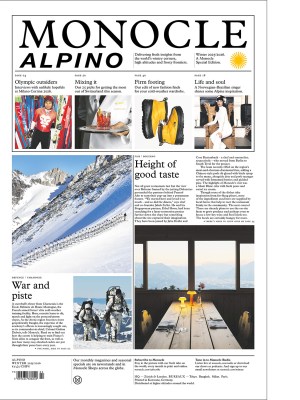Fenix Originals, the family-run furniture dealer championing forgotten Iberian design
Long underappreciated, Catalan furniture is at last receiving the attention that it deserves – thanks, in part, to a father-and-son duo.
If you head to Barcelona’s northeastern outskirts, where the city starts to give way to countryside, you’ll find yourself in the residential neighbourhood of Horta. And if, like Monocle, you have messaged ahead to signal your geographical discombobulation, you might just spot Pau Pibernat standing in the street, scrutinising the passing cars in search of a missing-in-action visitor. After a quick greeting, he will produce a remote control from his pocket and retract a roll-up metal door. Then he will take you through a passageway that leads to the hidden treasure trove that he and his father, Carles, have amassed since they started their business in 2021.
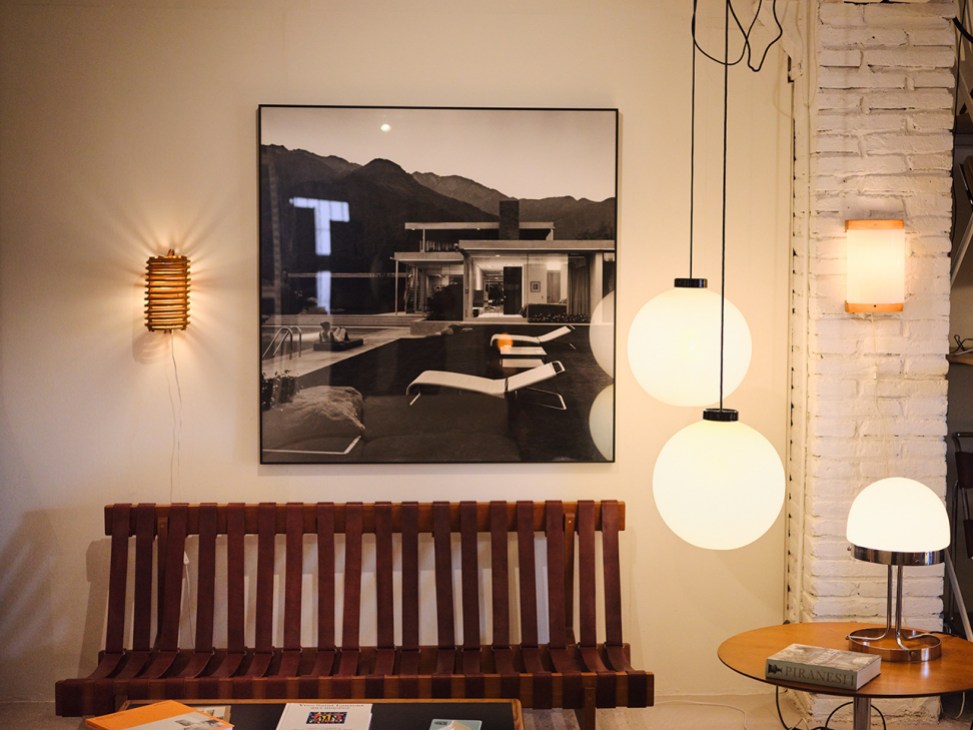
With assistance from Carles’s partner, industrial designer Constanze Schütz, the Pibernats run Fenix Originals, dealers in Catalan and Spanish furniture from the 1940s to the 1980s – though the occasional piece from, say, Herman Miller or Le Corbusier is allowed to sneak into the line-up too. That might not sound particularly unusual but it is. While these furniture makers were as skilled as their peers in the Nordics, France and Italy, many of them have only recently begun to receive the recognition that they deserve. This is thanks to people such as Pau and Carles, as well as a new generation of collectors, growing institutional interest and even film director Pedro Almodóvar (two chairs borrowed for his latest picture have just been returned).
“Part of this project is about putting the names of these designers on the table just as people in Scandinavia, for example, have done for their designers,” says Carles.
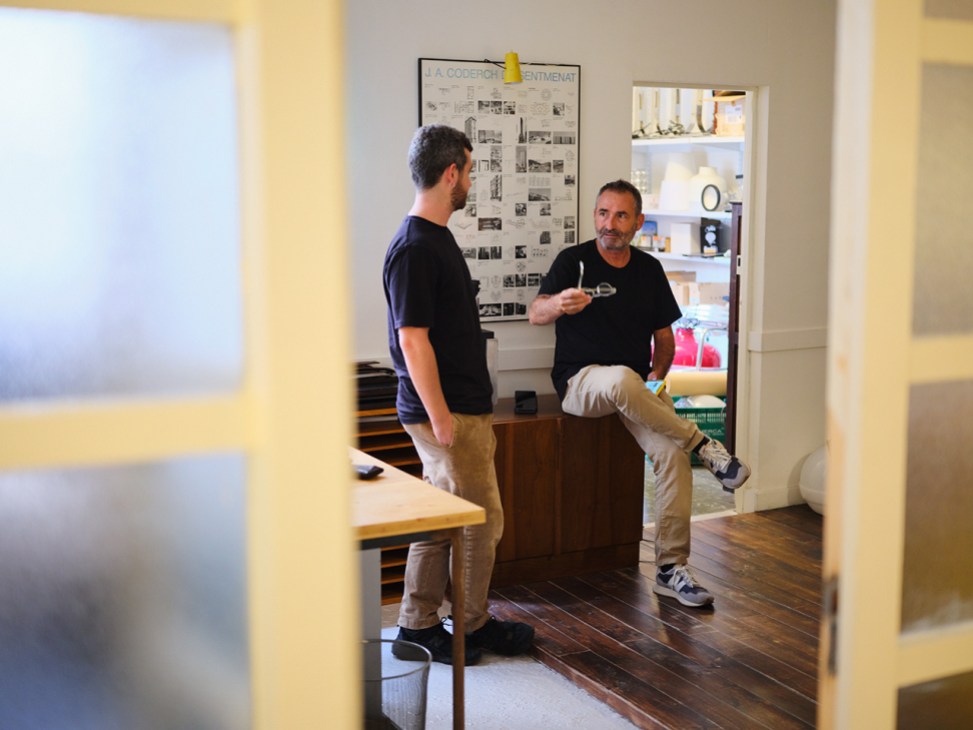
But there’s another reason that explains why these designers have sometimes been overshadowed by their contemporaries. “During the dictatorship [of Francisco Franco], Catalan designers weren’t selling much even in Spain and the production runs were also not very large,” says Pau. “Some of them were often just selling to the bourgeoisie in Barcelona.” He cites the example of pioneering industrial designer Jordi Vilanova, whose work combined elements of Scandinavian and Mediterranean design and was mainly popular with well-to-do Barcelonès. In recent years, however, his canon has been reappraised. “We’ve just sold some of his pieces to a key gallery in Holland,” says Pau.
So while, say, Danish mid-century furniture dealers are commonplace, their Iberian cousins are harder to locate (in every sense, it turns out, if you’re bad with a map). But first things first. Let’s look around this hidden-from-view, appointment-only gallery.
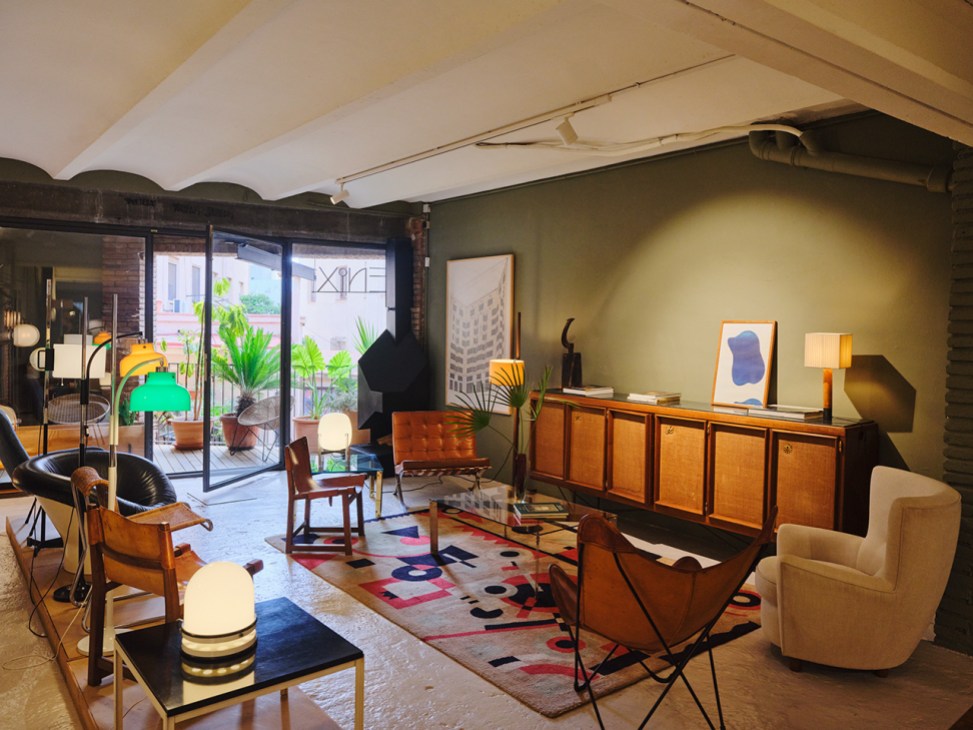
It’s a little overwhelming – in a good way. At the front of the space on white industrial racking sits chair after chair, all gently restored by the Pibernats and the artisans in their network. Then you come to a space with rooms set with furniture by designers including Joaquim Belsa Aldea and Vilanova (we spot a handsome walnut-and-marble side table from 1970 that could swiftly be rehoused), and lighting, such as Miguel Milá’s well-known work for Santa & Cole. Then there’s a repair station where, when we visit, Carles is in the throes of fixing a graceful Barceloneta armchair by Federica Correa and Alfonso Milá (Miguel’s elder brother). And last, we peek into a large storeroom filled with finds that have yet to be primed for sale. It’s a collection that has been put together with extraordinary knowledge, much of it gleaned by father and son after visiting archives, tracking down rare brochures from when the furniture or lighting first went on sale.
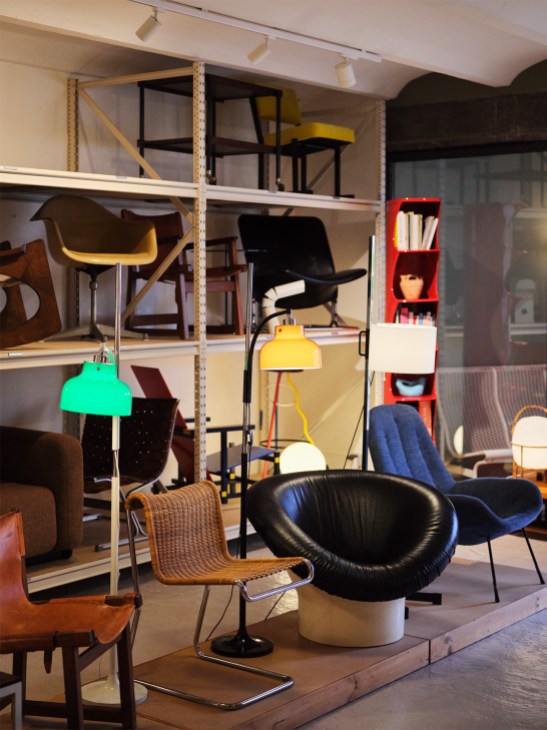
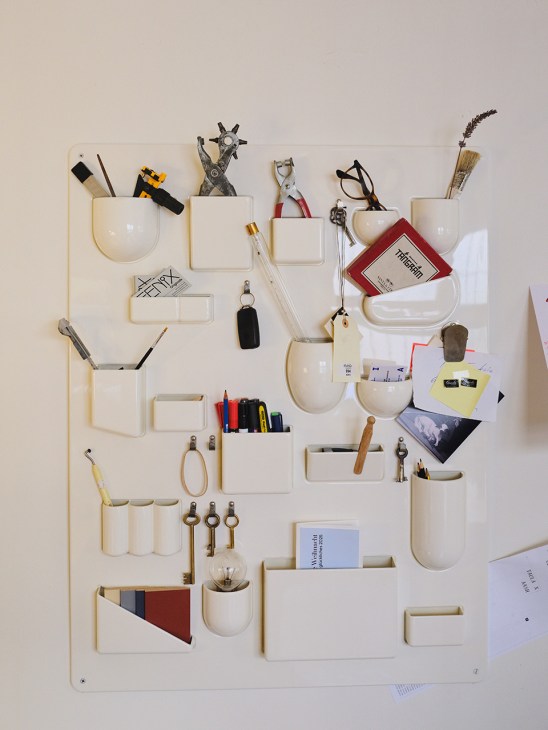
As the duo show Monocle around, their delight in what they have amassed is palpable. Carles produces a utilitarian folding metal chair with an orange frame and a shiny steel seat by Rafael Carreras Puigdengolas, from about 1960. “It’s the only one that we have found,” he says. We stop to inspect a Riaza armchair designed by Paco Muñoz in 1959 and produced by the firm Darro; it has a walnut frame that supports a back and seat stitched from a single piece of leather. There’s something reminiscent of Brazilian tropical modernism about its sturdy stature. “And look at this,” says Carles, stroking the black metal form of a fireplace, designed by architect José Antonio Coderch in 1952 for the company Polinax.
Both men are also champions of the work of Joaquim Belsa Aldea, whose output was aimed less at the middle classes than the masses and relied on the use of robust, artisan-style materials. They have coat racks made from loops of cane, a folding pine dining table, chairs with bright-blue frames constructed from tubular metal contorted to reflect the designer’s goal of making products with a single, continuous, flowing outline.
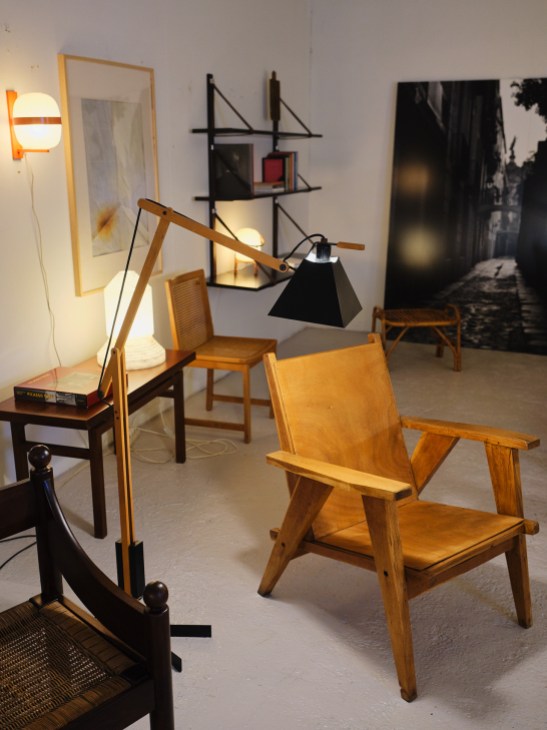
Another thing to admire is the relationship between Pau and Carles. They started the company at the height of the coronavirus pandemic when the latter decided that it was time to step away from his career as a graphic designer as it shifted from the craft that he had loved to the more pacey world of digital. Already a modest furniture collector, he saw an opportunity. Meanwhile, Pau, who was undertaking a doctorate in modern history, was wondering whether he really wanted to pursue an academic career. So they teamed up. “It was organic – my father had the idea and started setting up the business, and I said, ‘How can I help?’” says Pau. They bought a van and started tracking down pieces, giving themselves the target of amassing 100 items before launching their website (they took their Horta gallery space in 2023).
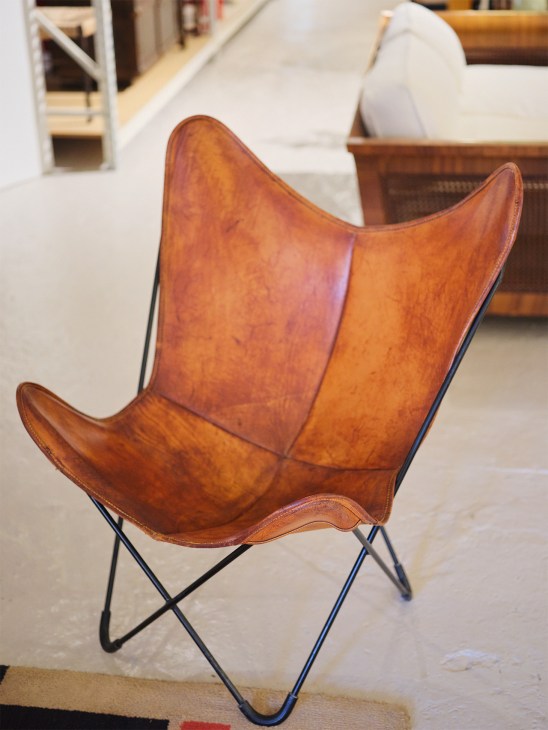
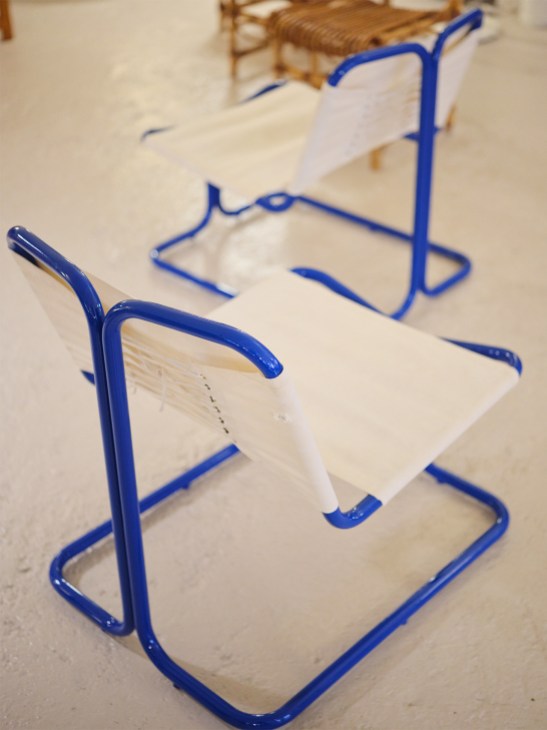
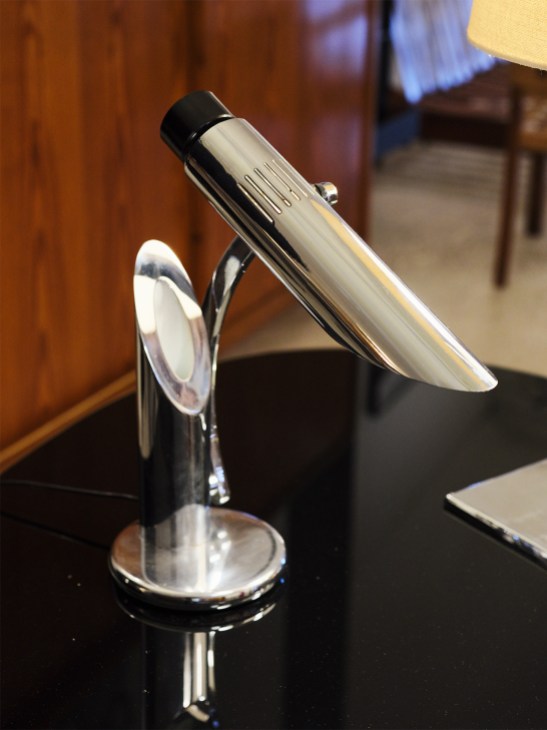
As for a name, in the 1980s there had been a design shop in Girona called Fenix Originals run by US designer Nancy Robbins. When it shuttered in the 1990s, Carles bought the sign and always said that one day he would launch a business with the same name, even using the same art deco-inspired font. Here, it rises again.
What next? Carles is clear. “To find better and better pieces, to discover forgotten designers and to focus on the cultural potential of this project. We want more time to do research, to tell these lost stories.”


